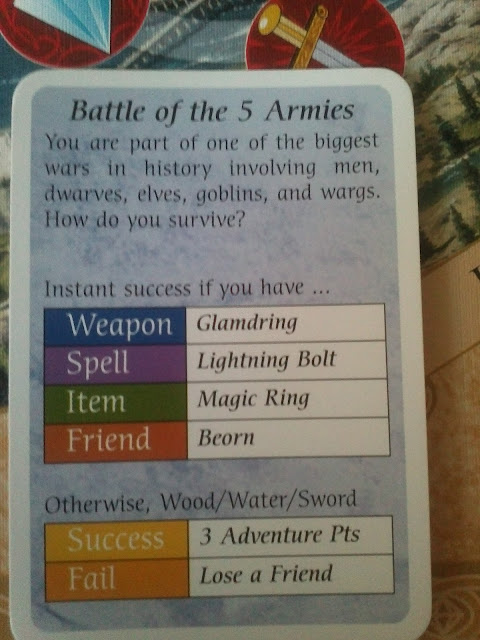 |
| Dallas Kasaboski |
I was looking for something interesting to play,
something D&D related, and could be possibly played by 2 people. I
didn’t want to pay a lot, and I’m not too sure about the newer D&D
board games. My online search yielded two games which
might prove interesting, namely Dungeon and The Hobbit board games. The
problem with these is that they are hard to find as Dungeon was
released in 1975 and even though several editions have been released,
it’s not exactly flying off the shelves. The Hobbit
has a similar history.
My mom says I am lucky, actually, the exact wording
she uses is a little more colloquial, but the meaning is the same.
Suffice it to say, as I was perusing the wares of this comic book shop, a
Happy Harbor Comics, which is an amazing place
full of games, comics, and all sorts of things, I came across The
Hobbit board game!
It was on the bottom shelf, behind some old
science-fiction books, used, and had a slight hole in the bottom of the
box. I thought, well, I’m here, I might as well ask and see how much it
is. The employee at the store looked at it, raised
an eyebrow, looked at me and said, “Really?” I laughed and asked how
much it was.
He didn’t know. Apparently, they forgot they had
the game, and it wasn’t in their system. He told me that he didn’t even
think the game had all of its pieces. I joked that it must be pretty
cheap then, that and because it was an old, used
game.
I paid $10, which is a steal for a board game, old
or not, and I brought it back to my place thinking that as long as the
instructions were there, I could make any piece which was missing. Turns
out, I didn’t need to, the pieces were all
there, and in great shape!
Now, enough about how I got the game, I’m sure you want to hear more about the game itself!
First thing I have to say is that the game concept
is unique, as far as board games are concerned. When I think of board
games, I usually think of Monopoly, Risk, or party games. Classic games,
but not what I was looking for. In The Hobbit,
the goal of the game is to steal from Smaug the dragon. Seen here on
The Lonely Mountain, he is surrounded by a hoard of jewels he has
presumably collected.
Starting at Bag End, you play as adventuring
hobbits, making your way to the Lonely Mountain, passing through some of
the familiar areas from The Hobbit novel like the Misty Mountains and
Mirkwood.
Along the way, you may run into goblins, have
trouble crossing rivers, or navigating dark mountain passes. You may
also run into Gandalf from time to time who offers you some assistance
in the ways of a gift. Each time you land on an Adventure
tile, the one with a sword on it, the player to your left draws the
next adventuring card and describes the encounter, like the one below.
You immediately succeed on the encounter if you have the right gift from
Gandalf, but if you don’t have the right gift,
you spin a spinner hoping the gods of chance are in your favour. You
can steal from Smaug before you get the mountain, but if you fail, Smaug
steals from you, adding to his hoard.
Once you arrive at the Lonely Mountain, you can
steal from Smaug using a system which is inherently backward if you’ve
ever played D&D. You roll a d20 (20 sided die), and hope to have a
result less than or equal to the sum of your adventuring
points (gained by succeeding on encounters) and jewels (gained in a
variety of ways). It was a little odd at first to be hoping to roll a
low number, and how a critical failure in D&D would be a critical
success in this game, haha.





Thanks for your help! I'm doing a project on building a board game on The Hobbit. It really helped!
ReplyDeleteLawl I bet "Bilbo" Is one of you :P
ReplyDelete712 812
Anonymous